Best Hiking Backpacks Rated by Hikers for 2018
Best Hiking Backpacks 2018
Buying the wrong type of hiking backpack for your trip can totally ruin your experience in a number of ways. You can end up short on supplies, the pack may be too heavy, or it’s not weather appropriate and all your belongings will get wet and damaged, or it’s too hot to use in the summer. See what we mean?
If you’re completely new to hiking in general, or you’ve never been hiking in the backcountry before, then you’ll need to do a little research before you buy the best hiking backpack, so even if you really don’t know what you’re doing, you backpack will be able to take care of you on your latest adventure.
Since you’re new to hiking, it may come as a surprise that there are several different sizes, styles, features and categories that these backpacks fall into. They range from weekend packs to day trip packs, to backcountry backpacks and extended excursion packs. You’re also going to need to take into account the weather, how long your trip will be, what type of weight you’re able to handle and how many pockets or storage options you need.
It sounds like a lot to consider, I know. Which is why we’ve taken the time to do most of the footwork for you, by compiling information for the top five best hiking backpacks for 2018, so you can get a look at what avid hikers and backpackers are using this year, for the weekend or extended trips, rain or shine.
We’ve included information on the different types of features available, the proper way to measure yourself before you begin shopping, and which style of hiking backpack will best suit your purpose.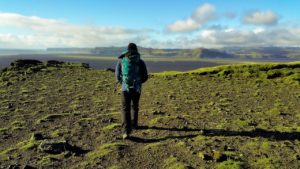
When compiling our list we also looked at affordable models, so you can easily pick out a pack that will meet both your needs and your budget.
Hiking is a great way to get in shape, reconnect with family and friends, and get a little or a lot of exercise or it can simply be a way to enjoy nature and your time away from work and busy city life.
If you enjoy hiking and camping, a backpack will probably be one of the most important pieces of gear you buy. It will allow you to carry your hiking food, water, and other essentials and may even be big enough to allow you to bring along some comforts from home, such as a good book, a favorite blanket or a comfortable camping chair. The packs featured here are true quality. Each model has something special to offer that made it stand out from the competition, but every model scored well for pricing, quality, and versatility.
Hiking Backpack Comparison Chart
| Image | Product | Comparison | Price | Rating |
|---|---|---|---|---|
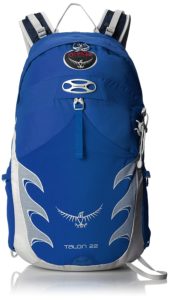 | Osprey Talon 22 Backpack | Type: Daypack Weight: 2.5 lbs. Ease of Use: ***** | $ | 4.6 |
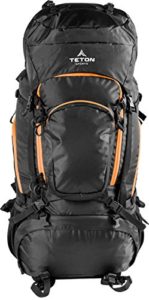 | TETON Sports Grand 5500 Backpack | Type: Extended Trip Weight: 5 lbs. Ease of Use: *** | $$$$$ | 4.6 |
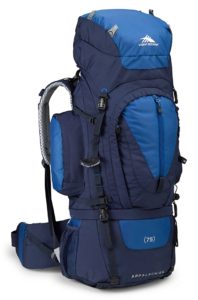 | High Sierra Appalachian 75 Hiking Backpack | Type: Extended Trip Weight: 5.8 lbs. Ease of Use: *** | $$ | 4.4 |
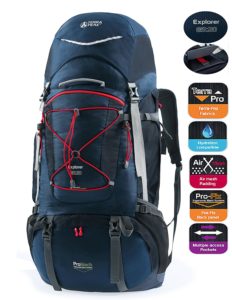 | Terra Peak Hiking Backpack | Type: Weeklong Weight: 4.98 lbs. Ease of Use: ***** | $$$$ | 4.9 |
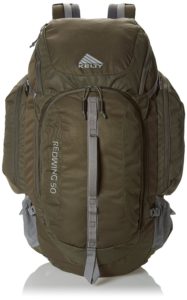 | Kelty Redwing 50 Backpack | Type: Weekend Weight: 3 lbs. Ease of Use: **** | $$$ | 4.7 |
1. Osprey Talon 22 Backpack Review-Best Hiking Backpack for 2018
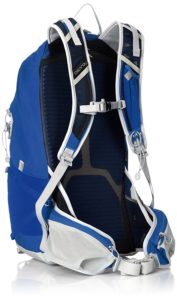 The Osprey Talon wins the top spot for the best hiking backpack for 2018 for standing out in a few very important areas: bonus features, versatility, and overall comfort. Because it offers a completely customized fit and great ventilation, this model is the most comfortable pack we tested. Regardless of the type of activities you’re into, this pack will excel in just about any application. With extra features such as bungee attachments for trekking, blinker clip patch, and helmet attachment, the features found in this pack are designed to make your outdoor adventures much easier.
The Osprey Talon wins the top spot for the best hiking backpack for 2018 for standing out in a few very important areas: bonus features, versatility, and overall comfort. Because it offers a completely customized fit and great ventilation, this model is the most comfortable pack we tested. Regardless of the type of activities you’re into, this pack will excel in just about any application. With extra features such as bungee attachments for trekking, blinker clip patch, and helmet attachment, the features found in this pack are designed to make your outdoor adventures much easier.
Osprey definitely didn’t skimp on features. This pack comes totally tricked out with a harness that’s impressively adjustable, hip belt pockets, ventilated back panel, outer stash pocket, and bungee tool attachment.
We love the helmet attachment which is the perfect addition for commuting and it’s very easy to use. This attachment will work the best with a biking helmet, but you can also use it for climbing specific helmets, however, it will not be quite as secure. In order to attach the helmet, all you have to do is slide the small plastic end through the vent hole and flatten it out.
We also found the extra stretchy mesh stash pocket that covers the exterior of the pack super handy. It’s perfect for quickly storing snacks, clothing or anything else you don’t want to take the time to place in the main compartment.
The backpack’s harness isn’t just fully adjustable, it also one of the easiest harnesses to adjust that we’ve ever come across. You’ll be able to customize the straps by undoing the Velcro, which is located in the hydration compartment. Next, just slide the straps until you get the perfect fit.
One unique feature is the hydration bladder, which has its own compartment, providing easy refill access, even if your pack is loaded to the limit.
Equipped with the manufacturer’s patented Inside Out compression straps, the stretch mesh side pockets will be the perfect place to store and secure small items.
All of these must-have features add some weight to this pack, with the Talon weighing in at a little over 2.5 pounds.
In addition, Osprey offers a lifetime guarantee on all of their back packs. If you don’t like them, they become damaged, or they don’t meet your needs, you can always return them.
Conclusion
If you’re searching for a hiking backpack that can accompany you on short weekend trips or a ride around town, then the Talon is a perfect choice. You’ll love the pole stowing feature, the ice axe attachment, the large number of storage options and the built-in hydration pack. The best part of this Osprey pack is its versatility, which is what made it our top choice.
Pros
The Talon features an AirScape design and consists of ridge molded foam that’s covered in mesh. The hip belt and harness provide excellent support while still remaining flexible even when under a heavy load. All of the carrying features add to this pack’s versatility. Plenty of storage options will allow you to stay organized and well prepared for your next trip. The company believes in its product so much that is offers a lifetime guarantee on its backpack. That means you can always return it and not be stuck with a pack you don’t like or that doesn’t work for you.
Cons
While we liked the overall design, the back panel material wasn’t as breathable as we would’ve liked.
CHECK THE LOWEST PRICE HERE2. TETON Sports Grand 5500 Backpack Review-Best Backpack for Backcountry Hiking
 Are you searching for a pack that’s reasonably lightweight, but tough enough to handle rain, snow, and ice without batting an eye? Meet the Tenton Sports Grand 5500 backpack.
Are you searching for a pack that’s reasonably lightweight, but tough enough to handle rain, snow, and ice without batting an eye? Meet the Tenton Sports Grand 5500 backpack.
This backpack is a durable camping and hiking pack and one that can guarantee that your gear will remain safe during your next adventure. This is a large pack that weighs in at just five pounds and contains a ton of padding in all the right places to ensure a comfortable journey. The torso length is highly adjustable, ranging from sixteen to twenty-two inches, giving the user plenty of room to get the right fit. The pack offers an impressive ninety liters of liquid capacity and features a large tarp poncho that can protect both you and your pack from the elements. The webbings loops attached to the exterior of the pack allow you to secure plenty of gear for fast access. The sleeping bag compartment includes a false door and zipper.
The ultra-padded lumbar region makes this pack easier to haul around when it’s filled to capacity.
Conclusion
Overall, we were extremely impressed with this Tenton Sports pack. Not only does it offer a large capacity for storage on the interior and exterior of the pack, but the pack itself is constructed of a material that’s extremely durable and tough, making it perfect for the icy, wet, or cold weather. The extra features really set this model apart from the competition. Priced affordably, you’ll be hard pressed to find another model in this price range with the same amount of features that make it suitable for week long hiking and camping excursions in the backcountry. From the reverse zippers, tie-downs, rain poncho, and the dual aluminum stays that offer increased durability, this is truly a versatile all-in-one pack that you’ll come to depend on out in the wild and this pack is definitely able to handle anything nature can throw at it. This backpack comes highly recommended and is the perfect choice for the serious adventurer.
Pros
With a number of compression straps, loops, and ties so you can carry a wider range of gear from trekking poles to helmets, this model is ideal for extreme backcountry hiking. You’ll also be impressed with the multiple configuration options that allow you to carry snowshoes, snowboards, skis and a removable daypack. The extra padding in the lumbar area makes it truly comfortable to wear, even for long periods of time.
The pack’s main compartment also offers fast access thanks to the large U-shaped zipper. The Oxford shell is durable and strong even in the toughest environments. The click-in locking mechanisms, mesh pockets, and no-snag zippers allow you to store extra gear for longer trips with ease. This pack also comes with a lifetime limited warranty.
Cons
The weight of the pack and the materials used do not make this model a good choice for warmer weather. The materials are not breathable, which limits the pack’s use to colder months only.
CHECK THE LOWEST PRICE HERE3. High Sierra Appalachian 75 Hiking Backpack Review-Best Value
 This pack scored well not only for its affordable pricing but for the tons of storage space it offers, not to mention the quality and innovative design.
This pack scored well not only for its affordable pricing but for the tons of storage space it offers, not to mention the quality and innovative design.
The High Sierra Appalachian 75 hiking backpack comes with a couple of access points to the main compartment: through the classic lid top or the U-shaped front panel entrance. The floating style lid allows you to open and close it depending on capacity. So if you have a heavier load and need extra space you can simply expand the collar. There’s also a total of four attachment loops located on the lid. Under the lid you’ll find the typical collar with two drawstrings, in addition to a compression strap you can use to cinch the pack or to attach a pad, tent, climbing rope or anything similar.
The pack’s main compartment is pretty huge and contains a water bladder sleeve. The hose ports are located on either side of the backpack. This model features a large bottom compartment that can be used to store your sleeping bag. You’ll also find a zippered divider that truly separates the main compartment from the bottom storage space. The sides of the pack feature vertically positioned dual daisy chains and compression straps. The compression straps run the length of the bottom compartment and are long enough to attach a bulky sleep pad. These straps reach all the way under the pack so you’re able to attach a few items even to the pack’s bottom. On the lower portion of the pack, you’ll find three attachment loops you can use for an ice axe or trekking poles.
When it comes to storing smaller items, on the front you’ll get a large zippered pocket, that’s somewhat shallow. The two big side pockets are also zippered and designed to expand outwards when they’re full so they won’t affect the storage capacity of the main compartment.
Conclusion
You won’t get some of the features you’d expect to find on a higher priced hiking backpack, but the features this pack does come with are still pretty impressive. Overall, this is a rugged hiking pack and one that will easily get you through the backcountry. It’s able to handle rain, ice, and snow, but it’s also breathable enough that you can use it during the summer months. We love the fact that even though it’s priced so low, it’s still made from strong materials and equipped with a ton of pockets and features we were surprised to find but definitely, need for those longer hiking trips.
Pros
On the sides of the pack you’ll find stretchy mesh pockets you can use to store water bottles. The pack’s suspension system is pretty simple. It’s supported by a couple of aluminum stays, which are positioned along the back, vertically. You’ll have access to them via the main compartment. Now we’ve come to the Ergo Fit shoulder harness, which is highly adjustable and can be moved up and down after you remove the Velcro tabs. The hip belt is equipped with a massive amount of padding. The back panel features a number of airflow channels for improved cooling during warmer months. You’ll also love the included rain cover, which can keep you and the pack dry as you trek through the wilderness.
Cons
This pack isn’t as light as some higher end models, but the extra weight is definitely worth the price.
CHECK THE LOWEST PRICE HERE4. Terra Peak Hiking Backpack Review- Most Storage Options
 For weekend trips, day trips or even several days out in the wilderness, storage space really matters. Aside from a large main compartment, we were looking for a model with more attachment options for the exterior, in addition to external zippered pockets that won’t hinder the available space in the main compartment, and we found exactly that with this Terra Peak pack.
For weekend trips, day trips or even several days out in the wilderness, storage space really matters. Aside from a large main compartment, we were looking for a model with more attachment options for the exterior, in addition to external zippered pockets that won’t hinder the available space in the main compartment, and we found exactly that with this Terra Peak pack.
The Terra Peak hiking backpack features tough, reinforced handles located at both ends of the backpack. There are also a couple of large mesh pockets located on either side, as well as slim, longer compartments on both sides. The pack’s main compartment is around twenty-eight inches long with a width of thirteen inches. Inside you’ll also find a two liter hydration bladder and a small hole for the tubing. This pack also comes in two color options: black or navy.
On the front of the pack there are a couple of large zippered compartments and two more located on the lid. All of the zippers are no-snag, featuring long extenders and strong metal pulls. On the side of the pack, the compression straps can be easily adjusted to accommodate a heavier load. The large straps located on the bottom of the pack can easily hold a small tent or large bedroll.
The narrow, webbed chest strap works to improve weight distribution, preventing your pack from shifting as you move. It’s comfortable to use and it can really make a difference if your pack is loaded to capacity.
While the pack’s material is water resistant, it also comes with a large rain poncho that’s big enough to cover both you and the pack, which gives this model more versatility in terms of weather.
The pack itself is fully adjustable for ultimate comfort. The sides of the pack feature butterfly expansion areas, while the back panel is made from a thickened type of 3D mesh that’s highly breathable.
Conclusion
This is another model that was priced affordable but still delivered in terms of quality and durability. It offers plenty of zippered storage space and a number of exterior attachment options which makes it perfect for the avid hiker who loves to stay organized.
Pros
The pack comes with a total of eight elastic bands and compression straps. The included waterproof poncho allows you to enjoy hiking and camping in rainy weather, without soaking you or your gear. This incredibly durable pack weighs just under five pounds, making it one of the lighter weight packs we reviewed.
Cons
This model doesn’t come with hip belt pockets and the top compartment cannot be removed and used as a day pack. There’s also no separate pocket for the rain poncho, instead, you’ll need to stow it in the top compartment.
CHECK THE LOWEST PRICE HERE5. Kelty Redwing 50 Backpack Review- Best Weekend Pack
 The Kelty Redwing 50 backpack is compact, very comfortable, versatile and packed with storage options. The main compartment features an extra-long surrounding zipper so you can instantly access all of your items, even gear placed at the bottom. Using this pack is so much easier than a traditional top loading backpack where you have to pull everything out to get to the item you want that’s located at the bottom.
The Kelty Redwing 50 backpack is compact, very comfortable, versatile and packed with storage options. The main compartment features an extra-long surrounding zipper so you can instantly access all of your items, even gear placed at the bottom. Using this pack is so much easier than a traditional top loading backpack where you have to pull everything out to get to the item you want that’s located at the bottom.
The pack is big enough to accommodate all the supplies you need to get through a weekend of hiking and camping.
A number of pockets provide a ton of flexibility in terms of how you’re able to use it. The pack can be used as a panel loader by simply undoing the compression straps on the side to fully open the pack’s main storage compartment.
Behind the main compartment, you’ll find an open pocket, while a zippered pocket can be found on the rear of the backpack. The side mesh pockets are fairly large and perfect for storing water bottles.
Conclusion
This isn’t a backpack that can withstand rough camping adventures during the winter, but it does have its uses. If you’re in the market for a weekend backpack, the Redwing is a great choice. It’s highly breathable, lightweight, equipped with plenty of storage space and the top loading option adds a lot of conveniences when you need it the most. Not a backpack for those week long trips, still this pack offers a lot of room to get you through the weekend, with a little to spare.
Pros
This pack comes with a compression strap on each side, both of which are long enough that they can be used to attach larger items to the sides of the pack, such as trekking poles. It also comes with an ice axe loop on the rear of the pack but doesn’t have a shaft holder. Along the base of the backpack are a couple of daisy chains which will make it possible to attach a sleeping bag, pad or small tent.
The back panel is covered in a thick mesh that’s designed to wick away moisture, so you’ll remain dry during warm weather. The pack’s torso length can be adjusted by moving the shoulder yoke up or down. It’s controlled by simple webbing straps that are placed close to the hip belt. The hip belt itself comes with pull forward straps to adjust it for the perfect fit. Hip control straps which are connected to the corners of the pack provide more lateral stability. Weighing in at just three pounds, this pack is the second lightest model we reviewed and makes it a perfect choice for shorter hiking trips.
Cons
There’s really no storage organization inside the main compartment, with the exception of the hydration pocket. You also won’t find any hip belt pockets, which is a downside, considering those pockets can offer a lot of convenience.
CHECK THE LOWEST PRICE HEREHiking Backpack Buyer’s Guide
 Nothing can compare to the experience of heading off into the backcountry with the best hiking backpacks that are designed to hold all the essentials. But choosing the right pack for an adventure isn’t always simple and there is a wide range of pack options to choose from.
Nothing can compare to the experience of heading off into the backcountry with the best hiking backpacks that are designed to hold all the essentials. But choosing the right pack for an adventure isn’t always simple and there is a wide range of pack options to choose from.
Your first step will be to determine the size of the pack you need. Another way to consider this is to determine how much stuff you’re willing to leave behind. Your pack size needs will be based on the type of activities you’re planning, such as intense hiking, a little fishing and of course, camping out. The weather or the season can also play a major role when it comes to choosing the right model.
Choosing a Style That Fits Your Hiking Environment
Overnight packs are probably the smallest type of hiking pack you’ll come across. These packs are designed to hold enough food and hiking gear for one or two nights of camping and hiking. So you can pack it with a sleeping bag, tent, sleeping pad, food, and clothing. You can also strap plenty of gear to the exterior. This type of pack is also a good option for dessert camping, which usually doesn’t require a tent. You can also use this style of a backpack as an extended day pack.
A weekend backpack is large enough to carry a sleeping pad, small tent, sleeping bag, and clothing. Other gear you’ll probably need to haul includes basic cookware, food, a small stove, navigation tools, first aid kit and a water purifier or filter. Depending on how good of a packer you are, you may also have some room for luxuries such as a lightweight camping chair, lantern, and coffee press.
A pack designed for a week of travel should be big enough to at least accommodate five days worth of supplies. These backpacks are designed to carry more cooking fuel and food than a standard weekend pack, in addition to extra layers and clothes. Backpacks specifically designed for winter camping or an expedition will be on the bigger side in order to accommodate mountaineering equipment, a warmer sleeping setup, survival gear, and first aid supplies. Keep an eye out for ample straps, burly suspension, and loops designed for gear attachment.
On you’ve determined the size of the pack you need, you’ll have to figure out what features you’ll get the most use out of. You’ll end up paying more for these extra features, but they can definitely make your journey more enjoyable. Packs with advanced ventilation or suspension or ultralight packs will help to keep you a little cooler but will also cost more.
Before moving onto the features, we thought we’d mention the external versus internal frame options. A pack with an external frame is considered the original style of a hiking backpack. They’re not really popular these days and only a few select brands still produce them. That being said they do offer plenty of advantages such as affordability, higher durability, better ventilation, the option to attach a lot more gear to the outside of the pack and the ability to carry a larger load.
When it comes to internal frame backpacks and their suspension systems, the packs are usually smaller and made from a variety of lightweight materials. These packs usually offer a lower profile and tend to be lighter than external frame models. Their lower profile is what tends to make them much more functional in smaller spaces such as overgrown trails. Because the pack allows you to carry the load closer to your body in a more compact manner, your mobility and balance will be better. When you use this pack for travel, the more streamlined shape will mean that it will be easier to transport on a plane or in a car, compared to external frame models.
Hiking Backpack Features That Allow You to Really Enjoy the Backcountry
There are several features you can check out when you’re shopping for a new pack. Many of these features will cause the price to go up, but they do significantly increase convenience and comfort as well.
Hip and shoulder belt padding is definitely a feature that’s worth a higher price tag. With hiking backpacks, you can expect to carry most of the weight on your hips, about ninety percent of it, in fact. The need for adequate padding will increase based on the weight of the pack you intend to carry. So for weeklong and weekend models, in particular, you’ll want plenty of shoulder and hip padding. Some manufacturers will offer hip belts that can be customized via heat molding. This technique works to greatly improve comfort, but this should only be done by a reputable dealer. A pivoting hip belt can work to improve balance in the suspension of the pack, while also increasing wearer comfort because the pack won’t shift around as you move. The use of lighter weight foams or mesh will make a pack easier to wear for longer periods of time in the warmer months. Belts with accessory pockets allow you to have faster access to essentials such as water, food, or your camera.
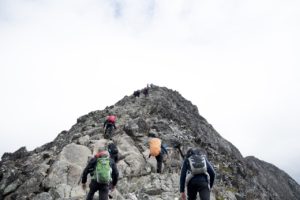 In warm weather, a backpack with excellent ventilation will mean the difference between a good experience and a terrible one. You’ll see materials used that include perforated foam, lightweight mesh, in addition to framing systems that will keep most of the back panel away from your skin. While it’s usually understood that this won’t affect a pack’s overall performance, it can definitely increase your comfort.
In warm weather, a backpack with excellent ventilation will mean the difference between a good experience and a terrible one. You’ll see materials used that include perforated foam, lightweight mesh, in addition to framing systems that will keep most of the back panel away from your skin. While it’s usually understood that this won’t affect a pack’s overall performance, it can definitely increase your comfort.
Extra attachments can also make life much easier in the backcountry and they can add a ton of versatility to your pack. Bungees, daisy chains, and loops work to increase the pack’s capacity by allowing you to attach extra gear to the outside of the pack. Compression straps allow you to simply cinch the backpack to a smaller size when it’s not filled to capacity, which helps to prevent it from shifting around.
Multiple access points and a sleeping bag compartment are other features to consider if you love being organized. Many models of packs consist of just a single compartment where you’ll need to carefully organize everything in order to make it work. Larger or multiple access points to the main compartment will become crucial on longer trips or through-hikes, where you’ll probably want to get in and out of your backpack more frequently and access certain items without having to dig down to the bottom of your pack. But with the more organization options comes a higher price. If instead, you decide to go with a more simple pack option, you can always invest in different types of pack organizational tools such as dry sacks, or compression sacks. Both of these have the advantage of being useable when you’re out on a trail.
Higher priced packs will come with an integrated rain cover that you can easily tuck away when it’s not needed, for simple models you’ll need to purchase a rain cover separately. If you think it may rain during your travels, then this feature is definitely worth considering.
Many models also come with top flaps, or lids, which are not only great for holding small items you want faster access to, but they’re usually removable so you can use them as a type of lumbar pack. This is a great feature if you’re setting up a camp base and planning to do day hikes from that point because it will give you a convenient way to carry smaller items such as food and water.
How to Stay Hydrated in the Backcountry
There are a couple of ways to access and carry your water on a hike. A water bladder will make getting enough liquids very convenient. The amount of water they can carry is usually around twelve liters. If you have a backpack that’s compatible, it’ll come with a separate sleeve for the bladder to slide into, in addition to a hook that will keep it hanging vertically. The shoulder harness will feature a clip and port that will keep the mouthpiece and tubing easily accessible. A water bottle pocket is also nice to have, especially, if you don’t want to use a larger hydration system. A water bottle is less prone to failure, compared to a bladder and they’re also much easier to fill up. Many hikers prefer to use both.
Backpack Length and Suspension Options
 It’s actually pretty important that the pack you choose fits correctly. There are a couple of elements to this: the length of the suspension system and the size of the hip belt. If the hip belt is too big, you’re not going to be able to carry a load correctly. Keep in mind that most of the weight rests on your hips so they’ll be able to disperse the weight evenly to larger muscle groups and bones. Every pack will have an adjustable belt, but some really take it up a notch by offering hip belts that are interchangeable and even more dialed in.
It’s actually pretty important that the pack you choose fits correctly. There are a couple of elements to this: the length of the suspension system and the size of the hip belt. If the hip belt is too big, you’re not going to be able to carry a load correctly. Keep in mind that most of the weight rests on your hips so they’ll be able to disperse the weight evenly to larger muscle groups and bones. Every pack will have an adjustable belt, but some really take it up a notch by offering hip belts that are interchangeable and even more dialed in.
The same applies to the shoulder harness system. A backpack isn’t sized by a person’s height, but by the length of their torso. Pack sizes aren’t standardized between brands, so it’s crucial that you measure yourself. The measurement you’re looking for is from the C7 vertebrae down to the iliac crest. You’ll probably measure in the sixteen to the twenty-three-inch range. Take a look at a manufacturer’s sizing chart based on your measurement. Most packs on the market feature suspension adjustment so you’ll get the best fit.
Hiking backpacks that are women specific will have shorter torso options and will be narrower. The shoulder straps will also be more contoured. These packs aren’t just smaller, the hip belts are canted to better fit a woman’s hips, the shoulder straps will feature thinner, narrower straps and the packs often come in a wider range of colors and designs.
The Importance of Weight Distribution
On your first hiking trip, the large added weight of one of these packs will definitely take some getting used to. Once you have your backpack loaded up and placed securely on your back, you’ll probably notice that you have to lean forward slightly in order to manage the weight. As you hit steeper terrain, you’ll notice that your body will naturally and automatically adjust by leaning forward even more than when you hike over flat terrain. When you’re in this type of position, most of the weight will be placed on the hips, while the rest of the weight is spread out along the top and front of your shoulder straps. This is why it’s so important to get a backpack that not only fits well around the hips but the shoulders as well.
 While a backpack that’s lightweight is definitely ideal, and it’s a good way to lighten the load you’re carrying around on your back, a lighter backpack usually doesn’t feature comfortable straps or plush suspension. This probably won’t matter as much to someone who goes on short trips for just a day or two and tends to pack pretty light anyway. But for people who usually bring plenty of extra comforts from home, or for those hikers who prefer longer trips, they will definitely benefit from a pound or more of padding and suspension. A heavier pack will also usually prove to be more durable and come equipped with plenty of bells and whistles compared to lightweight packs. Durability is obviously essential for the hiker who plans on spending a week or two in the backcountry. But the truth is, not everyone needs a pack that’s super durable, nor do they need to carry around the extra weight that will come with it. Ask yourself what’s the most important thing to you: durability, or a lighter load?
While a backpack that’s lightweight is definitely ideal, and it’s a good way to lighten the load you’re carrying around on your back, a lighter backpack usually doesn’t feature comfortable straps or plush suspension. This probably won’t matter as much to someone who goes on short trips for just a day or two and tends to pack pretty light anyway. But for people who usually bring plenty of extra comforts from home, or for those hikers who prefer longer trips, they will definitely benefit from a pound or more of padding and suspension. A heavier pack will also usually prove to be more durable and come equipped with plenty of bells and whistles compared to lightweight packs. Durability is obviously essential for the hiker who plans on spending a week or two in the backcountry. But the truth is, not everyone needs a pack that’s super durable, nor do they need to carry around the extra weight that will come with it. Ask yourself what’s the most important thing to you: durability, or a lighter load?
Final Thoughts on Hiking Packs
Knowing your way around a backpack and the different features available will probably have a major impact on the type of hiking backpack you end up choosing. You now have the knowledge to make an informed decision on a model that will allow you to enjoy that big adventure in the backcountry that’s coming up and thanks to your new best hiking backpack, you’ll be well prepared.
